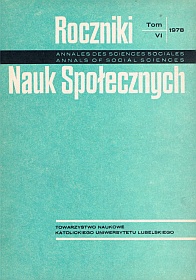Od Marshalla do Hicksa: drogi ewolucji neoklasycyzmu anglosaskiego
Abstrakt
The neoclassical school of economics began with Alfred Marshall, who established its foundations and research methods. According to Marshall, economics should be a real science, and not a formal one (as proposed by marginalists). This return to the realism of the classical school was for Marshall the essence of his „neo-classicism”. Moreover, economics was to be a deductive and not an empirical science, a positive and not a normative one. This attitude was followed by such outstanding Anglos axon neo-classicists as Clark, Fisher, Pigou, Robbins and Hicks. Their views on science were rooted in philosophical trends: first in scienticism, and then in the neo-positivism of Wienerkreis. In their economic analyses, they applied micro-economic methods and did not enter into the field of macro-economics.
Keeping the basic elements of Marshall’s method later neo-classicists presented different views on the character of economic laws. They also solved in a different way, the epistemological problem of how and to what extant principles of science reflect the real mechanisms of economic life. For Marshall, economic theory was only an ’’instrument of cognition”, a methodological manipulation which makes it possible to come successively closer to reality, but which is insufficient for its perfect recreation. This view was shared by Pigou and Hicks. Clark and Fisher stated, however, that there is a consistence between economic life and economic laws (the latter they treated as natural laws) which is due to the mechanistic structure of society. Still, in quite a different way, this relationship between the theory of economy and economic reality was formulated by Robbins. He thought that the subject of economics should be limited only to the acts of economic choice. Thus, economics became a science of rational management in a ’’fixed” s'- of means and goals, and neo-classicism with Robbins became theoretical.
Hicks opposed this tendency. He returned to the postulate formulated by Marshall and Clark, and later undervalued by subsequent neo-classicists; that theory of economy, if it is to come closer to reality, should impart dynamism. Hicks began looking for the method which would allow him to realize that task. The first important attempt to introduce the time element into a static analysis was undertaken by Hicks in his work ’’Value and Capital” (edited in 1939). A more perfect method of imparting dynamism to equilibrium theory (the so-called semi-static method) was presented by Hicks in his work, ’’Capital and Growth” (1965). Both these attempts, as well as the analysis by E. Lindahl of transition from one equilibrium to another were criticized by Hicks himself and found to be unsatisfactory. Thus, Marshall’s proposition has still not been realized, and neo-classical theory remained static in principle and far from the dynamic processes of economic life.
Copyright (c) 1978 Roczniki Nauk Społecznych

Utwór dostępny jest na licencji Creative Commons Uznanie autorstwa – Użycie niekomercyjne – Bez utworów zależnych 4.0 Międzynarodowe.


